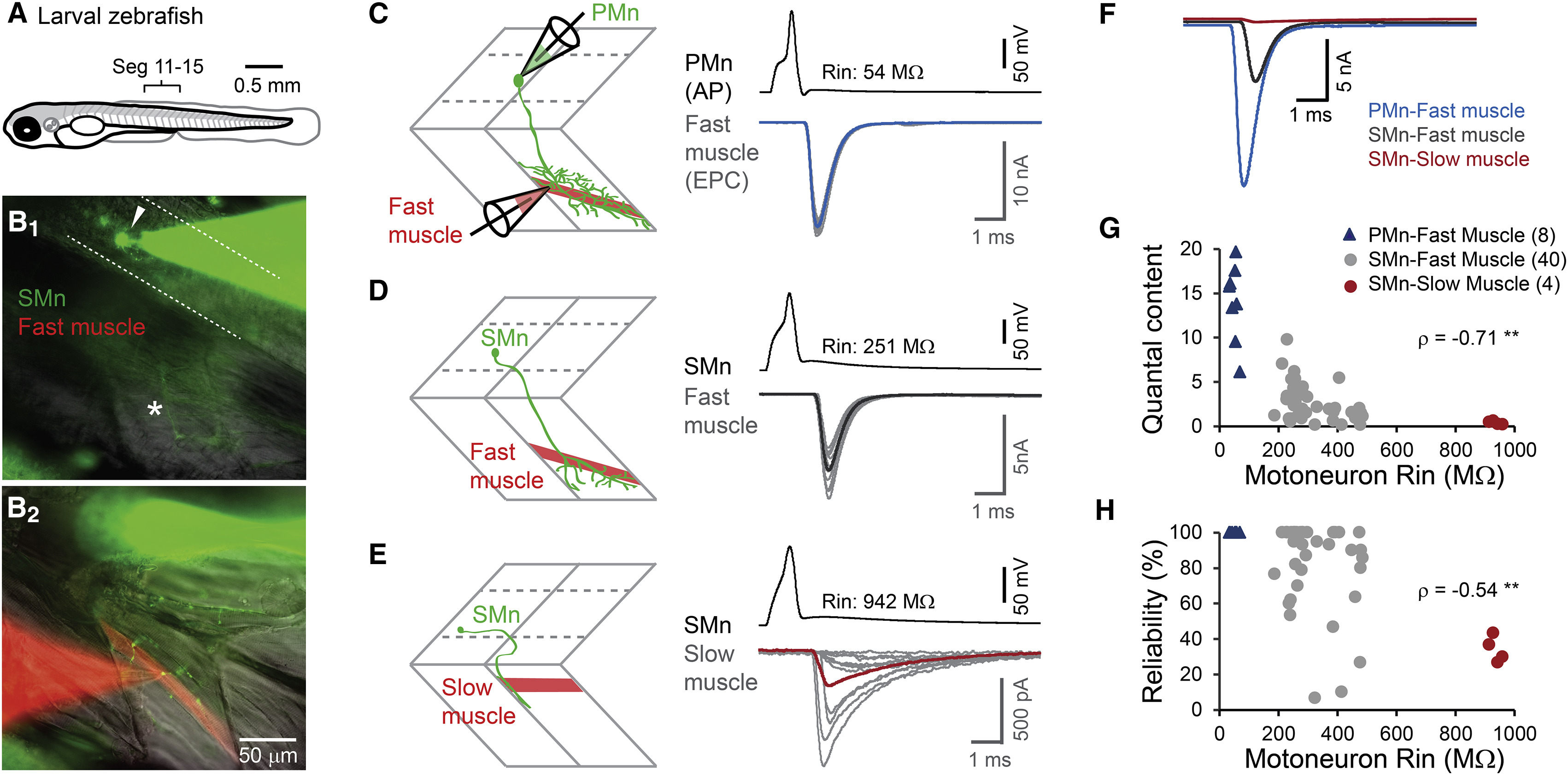Fig. 1
Motoneuron-Muscle Paired Recordings Reveal Differences in Strength and Reliability of Motoneuron Outputs
(A) Schematic of a 5 dpf larval zebrafish. Light gray shading marks the brain and spinal cord. Recordings were done at body segment 11?15.
(B) Experimental preparation for paired recordings on a secondary motoneuron (SMn) and a fast muscle cell, filled with Alexa Fluor 488 and 568, respectively.
(B1) Focal plane of the SMn cell body (arrowhead) and its main axon (asterisk). Dashed lines mark the boundaries of the spinal cord.
(B2) A more superficial focal plane with the motoneuron axonal projections and boutons that overlap with the recorded muscle cell.
(C?E) Schematics (left) and example traces (right) of whole-cell current-clamp recordings from a spinal motoneuron and whole-cell voltage-clamp recordings from a muscle cell (C, primary motoneuron [PMn]-fast muscle; D, SMn-fast muscle; E, SMn-slow muscle). The averaged waveform of motoneuron action potentials (APs; n = 10; firing at 1 Hz) is shown in black. The input resistance of the recorded motoneuron is indicated. Individual evoked endplate currents (EPCs; n = 10; gray) and their averaged waveform (colored) are temporally aligned to the peak of motoneuron action potentials to show the variability in amplitude. Note the different scales for EPC amplitude. The round-shaped EPCs in the example SMn-slow muscle recording are filtered inputs from neighboring muscle cells electrically coupled to the recorded muscle cell [17]. The red trace represents the averaged waveform of all ten individual current responses in (E), including responses to direct synaptic inputs (fast responses), electrically coupled inputs (slow responses), and failures.
(F) Averaged EPC waveforms of the three example recordings in (C)?(E) are temporally aligned to the peak of motoneuron action potentials.
(G) Quantal content of motoneuron outputs versus input resistance (Rin) of motoneurons. The number of recordings is indicated in parentheses. ??p < 0.01 following Spearman?s rank test (? is shown).
(H) Reliability of motoneuron action potentials eliciting EPCs versus motoneuron Rin. ??p < 0.01 following Spearman?s rank test (?).
See also Figure S1.

